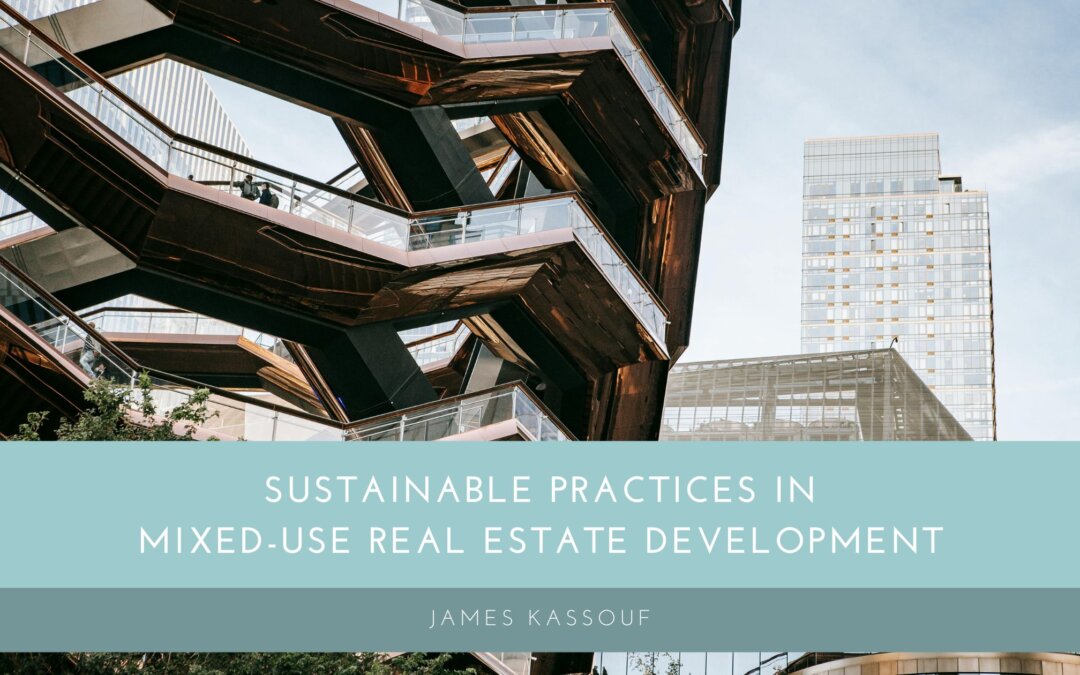In today’s rapidly urbanizing world, mixed-use real estate development has become a staple in city planning. These developments, which integrate residential, commercial, and sometimes industrial spaces within one project, promise urban efficiency. But as their popularity grows, there’s an urgent need to ensure these complexes are sustainable. Achieving eco-friendly design isn’t just about reducing a development’s carbon footprint; it’s about creating a holistic environment that meets today’s needs without compromising future generations.
Historically, urban spaces were segregated by function. However, as cities expanded and the drawbacks of such separations became evident—like increased commuting times and congestion—the concept of mixed-use development gained traction. But with this integration came challenges: How do you make these multifunctional spaces environmentally friendly? The need for sustainable practices in these developments isn’t just about addressing climate change. It’s about ensuring that as our urban centers grow, they remain livable, efficient, and vibrant. Sustainability in mixed-use real estate isn’t a luxury; it’s a necessity.
Energy Efficiency
Energy consumption remains one of the significant environmental impacts of any building project. For mixed-use developments, the challenge is two-fold, catering to both residential and commercial needs. Implementing sustainable practices starts with the design phase: Orienting buildings to maximize natural light, thereby reducing the need for artificial lighting, is crucial. Furthermore, using materials with good insulating properties can minimize energy consumption for heating and cooling.
Examples of renewable energy sources that may help offset energy needs include solar panels and wind turbines. Modern technologies, such as Building Management technologies (BMS), can track and manage a building’s energy use in real-time, ensuring that energy is utilized effectively throughout the construction. By making energy efficiency a priority, mixed-use developments can significantly reduce their environmental impact.
Water Conservation
Water is an invaluable resource, and its conservation is essential for sustainable development. In mixed-use real estate, efficient water management can be achieved through several methods. Implementing greywater recycling systems, where wastewater from sinks and showers is treated and reused for flushing toilets or landscaping, can drastically reduce water consumption. Rainwater harvesting systems can further supplement water needs.
Landscaping choices also play a role. Opting for native or drought-resistant plants can minimize the need for regular watering. Furthermore, employing intelligent irrigation systems that use real-time weather data can ensure that plants are watered only when necessary, reducing water wastage. By incorporating these practices, mixed-use developments can ensure they’re not depleting this precious resource.
Transportation and Connectivity
One advantage of mixed-use developments is the potential reduction in the need for daily commuting. By integrating residential, commercial, and sometimes even industrial elements, people can live, work, and relax within the same vicinity. However, sustainable transportation practices can enhance this benefit.
By incorporating dedicated bike lanes, secure bicycle storage, and even bike-sharing programs, developments can encourage cycling as a mode of transport. Prioritizing pedestrian pathways and ensuring they’re safe and accessible can further reduce car dependence. Additionally, integrating public transport options or providing shuttle services to nearby transit hubs can guarantee that when residents need to travel further afield, they can do so sustainably.
Mixed-use real estate developments present a unique opportunity to reshape urban living. By adopting sustainable practices in energy, water, and transportation, these developments can serve as a blueprint for future urban planning, marrying functionality with environmental responsibility. As cities grow and evolve, sustainability principles will become even more crucial. By making them a cornerstone of mixed-use real estate now, we can ensure that our urban landscapes remain vibrant, efficient, and, most importantly, sustainable for future generations.

